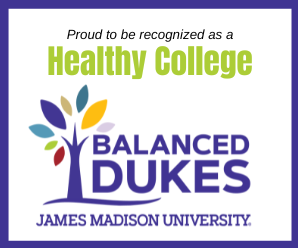
The College of Education has the longest history at James Madison University since the institution was established in 1908 as the State Normal and Industrial School for Women. JMU has changed its name several times over the years but we have consistently grown in reputation and size as a college and university. The College of Education currently has more than 100 full-time faculty and more than 3,000 students in teacher licensure programs. In the 2020-2021 academic year our students clocked 90,890 practicum hours and 208,800 student teaching hours. We have 49 initial licensure programs and five advanced licensure programs. See more of our impact in the 2021 Significance Report.
Office of the Dean
Personnel of the Dean's Office
The College of Education at JMU
3175 Memorial Hall
395 South High Street
Harrisonburg, Virginia 22807
(540) 568-6572
Mission and Vision
Mission Statement
Our mission is to prepare educators and leaders to thrive in a complex global environment. We engage in collaborative, transformative, and meaningful work through evidence-based practices to
- empower all learners,
- foster continuous growth, and
- advocate for equal protection for all
Vision
Our vision is to be a model for transforming educational landscapes into those that develop and inspire learners, educators, and leaders to effect positive, sustainable change.

